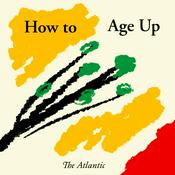Available Episodes
5 of 77
- E76 La Tragica Historia de Omayra SanchezOmayra Sánchez was a 13-year-old girl who was tragically trapped for almost three days under the debris of her home after the 1985 eruption of the Nevado del Ruiz volcano in Colombia. Despite rescue efforts and media coverage, her legs were hopelessly pinned, and rescue workers could not reach her with the necessary equipment to free her without amputating her legs. After approximately 60 hours, she died from complications, likely a heart attack, gangrene, or hypothermia.Her story became a global symbol of the disaster and the failures in the official response, and a photo of her by Frank Fournier won the World Press Photo of the Year in 1986. Send me a text but know that I can’t respond here Support the showYou will find the full transcript behind the show notes: https://interspanish.buzzsprout.comIf you have a story or topic you would like me to cover, please send your suggestions to: [email protected] Please visit my socials: https://linktr.ee/InterSpanish--------28:13
- E75 Mamíferos Marinos en Cautiverio: Entre la Conservación y la Controversia.The captivity of marine mammals such as orcas, dolphins, sea lions, and belugas has been the subject of intense debate in recent decades. Although initially justified on the grounds of education, conservation, and entertainment, multiple scientific studies have demonstrated that confining these species generates profound negative consequences. These effects are not limited to the individual well-being of the animals but also impact ecology, the health of ecosystems, and the ethical perception of our relationship with nature.The movie “Free Willy,” which premiered on July 16, 1993, brought this issue to the public's attention, transforming a fictional story into a global call to question the legitimacy of captivity. Its protagonist, the orca Keiko, went from movie star to living symbol of the fight for freedom, awakening a collective consciousness that still fuels the debate about respect and dignity for marine life.The public demanded Keiko's actual release, as it was contradictory that the “star” of a film about freedom should remain in captivity.On July 11, 2002, Keiko was officially released off the coast of Iceland, in the same place where he had been captured 23 years earlier, becoming the first—and only—captive orca to return to its natural habitat. * * * * * * * * * * * * * * * * * *In captivity, tanks represent only a tiny fraction of their natural habitat. Restricted space, lack of environmental stimuli, and forced separation of social structures generate chronic stress and psychological disorders in captive marine mammals.Captivity imposes a series of unnatural conditions that impact the health of marine mammals, such as confinement in chemically treated water can cause skin problems.Instead of hunting, they are fed dead fish and vitamin supplements, which do not satisfy their natural stimulation needs.However, there are strong arguments in favor of this practice when managed under strict regulations and with a focus on animal welfare, education, research, and conservation. A crucial function of marine rehabilitation centers is the rescue and rehabilitation of injured, sick, or stranded animals. And in cases where animals cannot survive in the wild due to serious injuries or human dependency, captivity offers a permanent shelter, safe and stable.Keiko's legacy reminds us that freedom cannot be replicated in a tank and that, if we truly wish to conserve these species, we must do so in the only setting capable of sustaining them: the open sea.Send me a text but know that I can’t respond here Support the showYou will find the full transcript behind the show notes: https://interspanish.buzzsprout.comIf you have a story or topic you would like me to cover, please send your suggestions to: [email protected] Please visit my socials: https://linktr.ee/InterSpanish--------31:41
- E74 La Santa Inquisición en la Nueva España - El Horror de la HogueraThe Holy Inquisition was established in 1478 in Spain and later expanded to its colonies, including New Spain in the Americas under the protection of the Spanish Crown and the Catholic Church .Its primary goal was to enforce religious conformity and combat heresy, and it exercised strong ideological and religious control for almost 300 years.In its quest to preserve Catholic orthodoxy, it persecuted and punished hundreds of people, particularly among those who had converted to Christianity from other faiths, and accused them of committing alleged crimes against the faith, many of them without solid evidence or guarantees of justice.The legacy of the Inquisition remains as a reminder of the dangers of religious fanaticism and the abuse of power in the name of faith.Its story serves as a warning of the importance of always defending pluralism, human rights, and freedom of conscience without fear of persecution. Send me a text but know that I can’t respond here Support the showYou will find the full transcript behind the show notes: https://interspanish.buzzsprout.comIf you have a story or topic you would like me to cover, please send your suggestions to: [email protected] Please visit my socials: https://linktr.ee/InterSpanish--------31:08
- E73 El Tren de Hierro, Un Monstruo en FugaOn May 12, 1989, at 7:36 a.m., a freight train from the Southern Pacific, transporting trona, lost control while descending Cajon Pass, derailed catastrophically on an elevated curve, and plowed into a residential area on Duffy Street, a quiet residential street in San Bernardino, California.The accident was devastating; the lead locomotives and all freight cars were destroyed. The conductor, head-end brakeman, and two residents lost their lives in the incident. In addition, seven houses on the street immediately next to the tracks were demolished by the wreck, as were the lead locomotives and all of the freight cars. Clerks in Mojave had miscalculated the weight of the train, while the engineer and crew were unaware that one of the rear helper engines had inoperative dynamic brakes. Hence, there was not enough dynamic braking force available to maintain control of the train's speed during the descent. This is the story of the San Bernardino train derailment in 1989. Send me a text but know that I can’t respond here Support the showYou will find the full transcript behind the show notes: https://interspanish.buzzsprout.comIf you have a story or topic you would like me to cover, please send your suggestions to: [email protected] Please visit my socials: https://linktr.ee/InterSpanish--------30:46
- E72 El Condor PasaThe California Condor, an awe-inspiring bird, holds a unique place in both ecological and cultural spheres. Its story of survival against formidable odds is a testament to the resilience and efforts of conservationists worldwide. In the 1980s, the California Condor was perilously near extinction, with only 22 birds remaining in the wild. This dire situation prompted urgent action from conservation groups, who took the bold step of capturing the remaining birds and placing them in captivity to protect the species from disappearing forever. The decision to bring the condors into captivity sparked a meticulously planned reproduction program that, against all odds, proved to be overwhelmingly successful. Today, the population of California Condors has increased to around 560 individuals. Remarkably, there are now more condors flying freely in the skies of California, Arizona, Utah, and Baja California in Mexico than those housed in captivity. This milestone is a significant achievement, showcasing the determination and dedication of conservationists to restore this magnificent bird to its natural habitat. The California Condor plays a crucial role in its ecosystem. As scavengers, they help maintain the ecological balance by consuming carrion, which, if left unchecked, can spread diseases and disrupt the environment. These birds, with their impressive wingspans and keen eyesight, are adept at locating animal carcasses from great distances, ensuring the natural recycling of organic matter. Their presence signifies a healthy and functioning ecosystem, making their conservation critical to maintaining biodiversity. Beyond their ecological importance, condors hold profound cultural significance for many Indigenous peoples of the western United States and South America. These majestic birds are revered in various tribal traditions and spiritual beliefs, symbolizing freedom, power, and wisdom. The condor’s soaring flight is often seen as a connection between the earthly realm and the spiritual world, embodying the harmony between nature and humanity. One of the most poignant cultural representations of the condor’s significance is the melody "El Condor Pasa," composed in 1913 by Peruvian musician Daniel Alomía Robles. This evocative song was crafted to represent the suffering and resilience of the oppressed Indigenous people of Peru. "El Condor Pasa" has transcended its origins, becoming a symbol of cultural identity and the second anthem of Peru. Its haunting melody and powerful themes resonate deeply with listeners, reflecting the enduring spirit of the condor and the people it represents. In conclusion, the California Condor’s importance extends far beyond its physical presence. It symbolizes triumph, an ecological cornerstone, and a cultural icon. As we celebrate the success of the conservation programs that have brought these birds back from the edge of extinction, we must remain vigilant in our efforts to protect and preserve the condor and the natural world. Send me a text but know that I can’t respond here Support the showYou will find the full transcript behind the show notes: https://interspanish.buzzsprout.comIf you have a story or topic you would like me to cover, please send your suggestions to: [email protected] Please visit my socials: https://linktr.ee/InterSpanish--------34:56
More Education podcasts
Trending Education podcasts
About Intermediate Spanish Stories
For intermediate Spanish language learners (A2 - C2) Improve your Spanish language listening comprehension skills and immerse yourself in interesting stories on various topics in Spanish (Mexico) spoken at a slower pace to increase understanding of oral language and build vocabulary. There are no grammar lessons, just stories.You can find the free transcript on the website, in the tab behind the description. If you have an interesting story or topic you would like me to cover, you can send me your suggestions via email at: [email protected]
Podcast websiteListen to Intermediate Spanish Stories, The Rich Roll Podcast and many other podcasts from around the world with the radio.net app

Get the free radio.net app
- Stations and podcasts to bookmark
- Stream via Wi-Fi or Bluetooth
- Supports Carplay & Android Auto
- Many other app features
Get the free radio.net app
- Stations and podcasts to bookmark
- Stream via Wi-Fi or Bluetooth
- Supports Carplay & Android Auto
- Many other app features


Intermediate Spanish Stories
Scan code,
download the app,
start listening.
download the app,
start listening.






































